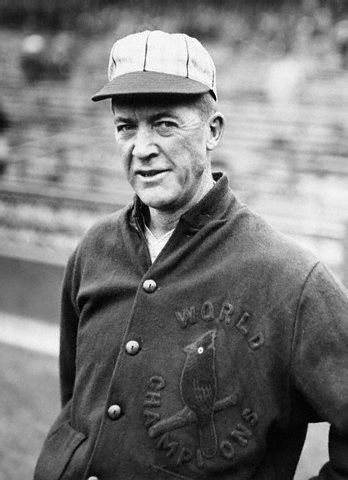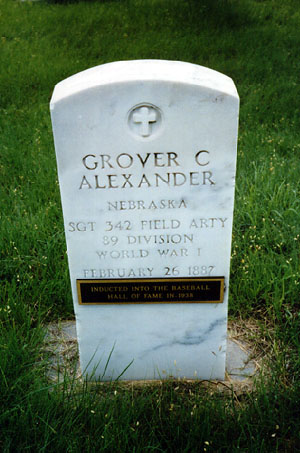GPeterPeteoPetevPeteePeterPete PeteCPetelPeteePetevPeteePetelPeteaPetenPetedPete PeteAPetelPeteePetexPeteaPetenPetedPeteePeterPete (Grover Cleveland Alexander)

Alexander was born in Elba, Nebraska, in the first term of President Grover Cleveland and was one of thirteen children. He played semi-professional baseball in his youth, signing his first professional contract at age 20 in 1907 for $50 per month. In 1909 he played for the Galesburg Boosters in the Class D Illinois–Missouri League and went 15-8 that year. His career was almost ended when he was struck by a thrown ball while baserunning. Although this ended his 1909 season, he recovered by 1910 to become a star pitcher again, finishing with a 29-11 record for the Syracuse Stars in the Class B New York State League, before being sold to the Philadelphia Phillies for $750. Alexander made his Philadelphia debut during the pre-season 1911 City Series, pitching five-innings of no-hit, no-run baseball against the Athletics. He made his official Major League debut on April 15. He was joined on the Phillies that year by catcher Bill Killefer, who went on to become Alexander’s favorite receiver, catching 250 of his games.
In his rookie year, Alexander led the league with 28 wins (a modern-day rookie record), 31 complete games, 367 innings pitched, and seven shutouts, while finishing second in strikeouts and fourth in ERA. From 1912 to 1921, Alexander led the league in ERA five times (1915–17, 1919, and 1920), wins five times (1914–17, 1920), innings six times (1912, 1914–17, 1920), strikeouts six times (1912, 1914–1917, 1920), complete games five times (1914–1917, 1920), and shutouts five times (1915, 1916 [a single-season record 16], 1917, 1919, 1921). He won pitching’s Triple Crown in 1915, 1916, 1917, and 1920. In 1915, he was instrumental in leading the Phillies to their first pennant, and he pitched a record four one-hitters.
After the 1917 season, the Phillies sold Alexander to the Cubs, ostensibly fearful that he would be lost to the army in World War I, but as Phillies owner William Baker admitted later, “I needed the money”. Alexander was drafted and one month before shipping out, he married Amy Marie Arrants on May 31 in a courthouse ceremony in Manhattan, Kansas (the couple later divorced in 1929, remarried in 1931, and divorced again in 1941). Alexander spent most of the 1918 season in France as a sergeant with the 342nd Field Artillery. While he was serving in France, he was exposed to German mustard gas and a shell exploded near him, causing partial hearing loss and triggering the onset of epilepsy. Following his return from the war, Alexander suffered from shell shock and was plagued with epileptic seizures, which only exacerbated the problems he already was experiencing with alcohol. Always a drinker, Alexander hit the bottle particularly hard as a result of the physical and emotional injuries he sustained in the war – injuries that plagued him for the rest of his life. People often misinterpreted his seizure-related problems as drunkenness. In spite of all this, Alexander gave Chicago several successful years and won another pitching triple crown in 1920. Tiring of his increasing drunkenness and insubordination that was often directly related to his epilepsy, the Cubs sold him to the Cardinals in the middle of the 1926 season for the waiver price. Then-Cubs manager, Joe McCarthy stated the reason for the sale was, “The Cubs finished last last year and if they finish last again, I’d rather it be without [Alexander].”
The Cardinals won the National League pennant that year and met the New York Yankees in the World Series, where Alexander pitched complete game victories in Games 2 and 6. According to teammate Bob O’Farrell in The Glory of Their Times, after the game six victory, Alexander got drunk that night and was still feeling the effects when he was sent out to pitch the next day in Game 7. Alexander came to the game in the seventh inning after starter Jesse Haines developed a blister, with the Cardinals ahead 3–2, the bases loaded and two out. Facing Yankee slugger Tony Lazzeri, Alexander struck him out and then held the Yankees scoreless for two more innings to preserve the win and give St. Louis the championship. He had one last 20-win season for the Cardinals in 1927, but his continued drinking finally did him in. He left major league baseball after a brief return to the Phillies in 1930, and pitched for the House of David until 1940. Alexander attended game three of the 1950 World Series at Yankee Stadium where he saw the Phillies lose to the Yankees. He died less than a month later, on November 4 in St. Paul, Nebraska, at the age of 63.
Alexander’s 90 shutouts are a National League record and his 373 wins are tied with Christy Mathewson for first in the National League record book. He is also third all time in wins, tenth in innings pitched (5190), second in shutouts, and eighth in hits allowed (4868). At the time of Alexander’s final victory, in August 1929, the news media reported that he had broken Mathewson’s career victories record of 372. In the 1940s, Mathewson was discovered to have qualified for an additional victory (May 21, 1912) and his total was officially upped to 373 and into a tie with Alexander. Alexander posted a lifetime winning percentage of .642.
In 1915, he won his first World Series game (the opening game of that series), for the Philadelphia Phillies. It would be 65 years before the Phillies won another World Series game. In 1999, he ranked number 12 on The Sporting News list of the 100 Greatest Baseball Players, and was a nominee for the Major League Baseball All-Century Team. Alexander was elected to Baseball’s Hall of Fame in 1938, the third year of the Hall. Alexander was the only player elected that year.
During the late 1930s and early 1940s, Alexander continued to play baseball, touring as a player-coach for the Grover Cleveland Alexander’s House of David Team. The team’s tour was managed by J. L. Wilkinson and often played against the Kansas City Monarchs. Alexander played with and against many of the Negro League stars of the day, including Satchel Paige, John Donaldson, Newt Joseph, Chet Brewer, and Andy Cooper. Newspapers often mentioned Alexander’s full name when writing about him, in addition to just “Grover”. He was also sometimes called “Alec”, and on occasions when he succeeded in grand fashion (as with the 1926 World Series), they would call him “Alexander the Great”. So dominant was he during the 1920s that many players and writers of his era referred to him as “the best pitcher to ever put on a pair of shoes”.
The origin of the nickname “Old Pete” is something of a mystery. It is uncertain how frequently Alexander was publicly called by that nickname during his playing days. On his 1940 Playball baseball card he was referred to as “Ol’ Pete.” In The World Series and Highlights of Baseball, by Lamont Buchanan, published in 1951, the year after Alexander died, on pp. 106–107 the author refers to “Pete Alexander” and “Ol’ Pete” in a matter-of-fact way, suggesting the nickname was well-known. When he won his 373rd game on August 10, 1929, one newspaper had called him “old Pete”, indicating that the nickname was in public circulation. His nickname among family friends in Nebraska was “Dode.”
Born
- February, 26, 1887
- USA
- Elba, Nebraska
Died
- November, 04, 1950
- USA
- Saint Paul, Nebraska
Cemetery
- Elmwood Cemetery
- Saint Paul, Nebraska
- USA




